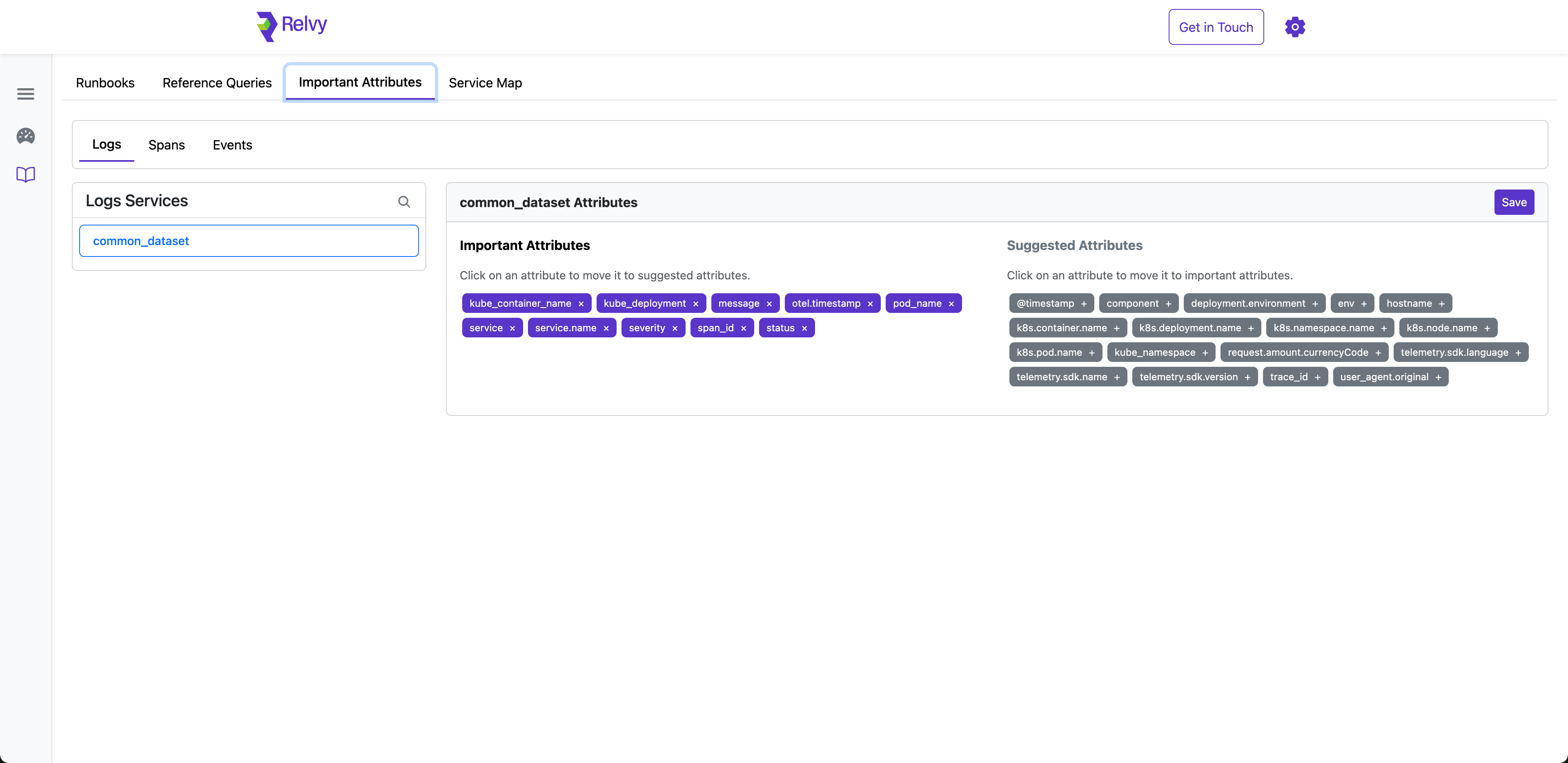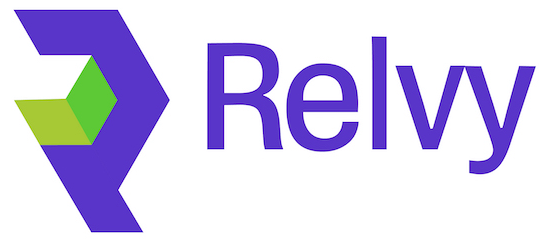Define Important Attributes
Relvy ingests a wide range of data from your observability sources, including logs, spans, and events. Each of these data points may carry a large number of attributes — some of which are more relevant to your debugging workflows than others.What Are Important Attributes?
Important Attributes help Relvy understand which fields matter most in your logs, traces, and events. Instead of treating all attributes equally, Relvy uses this configuration to:- Prioritize relevant data during investigations.
- Simplify the data view by focusing on high-signal attributes.
Managing Important Attributes
To customize this configuration:- Go to the Important Attributes tab in the Discovery Section.
- Select the data type and dataset you want to configure (logs, spans, or events).
-
You’ll see two panels:
- Important Attributes: A list of currently prioritized fields.
- Suggested Attributes: Other attributes discovered in the dataset that are available but not currently prioritized.

Add or Remove Attributes
- To add an attribute, click on any item in the Suggested Attributes section to move it into Important Attributes.
- To remove an attribute, click on it in the Important Attributes section to move it back to Suggested.
- Click Save to apply your changes.
Why This Matters
By fine-tuning the Important Attributes:- Your team can focus on signal over noise during investigations.
- Relvy can better ingest data from different modalities.

